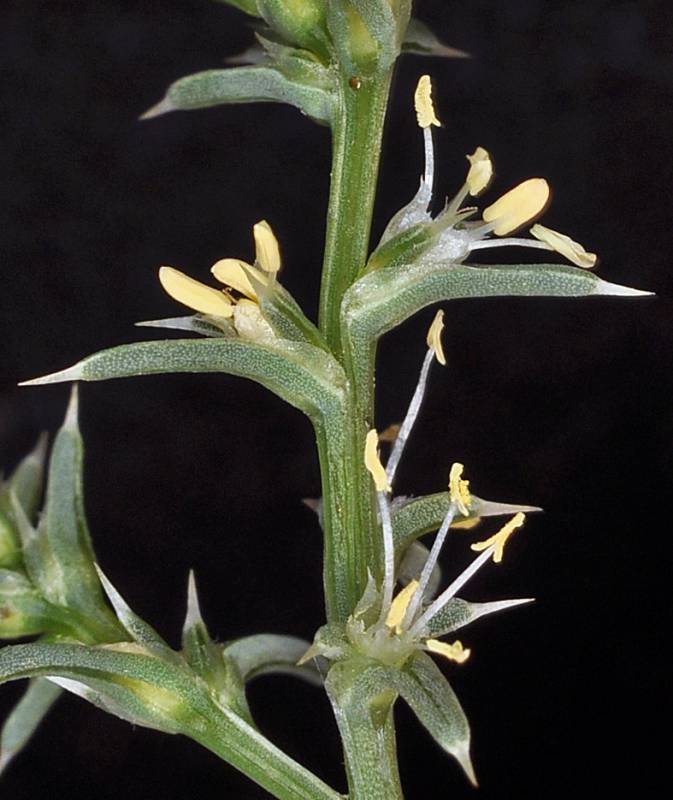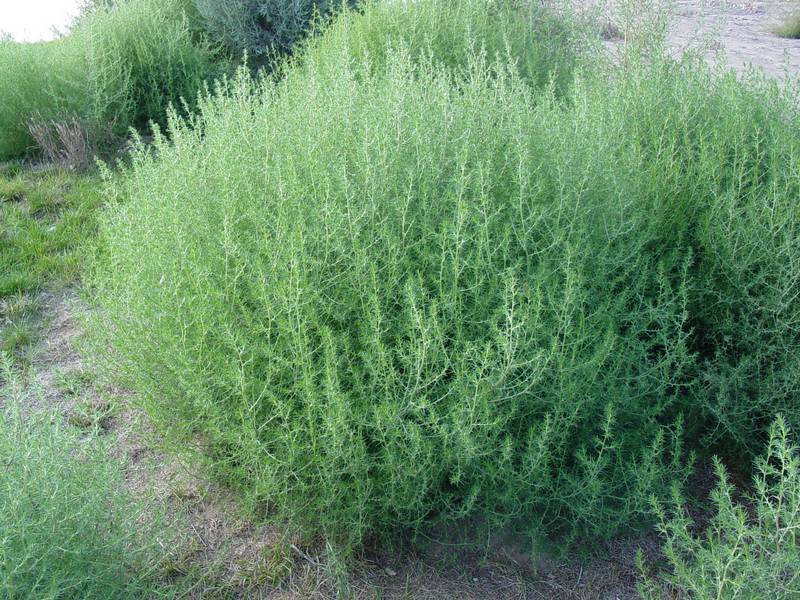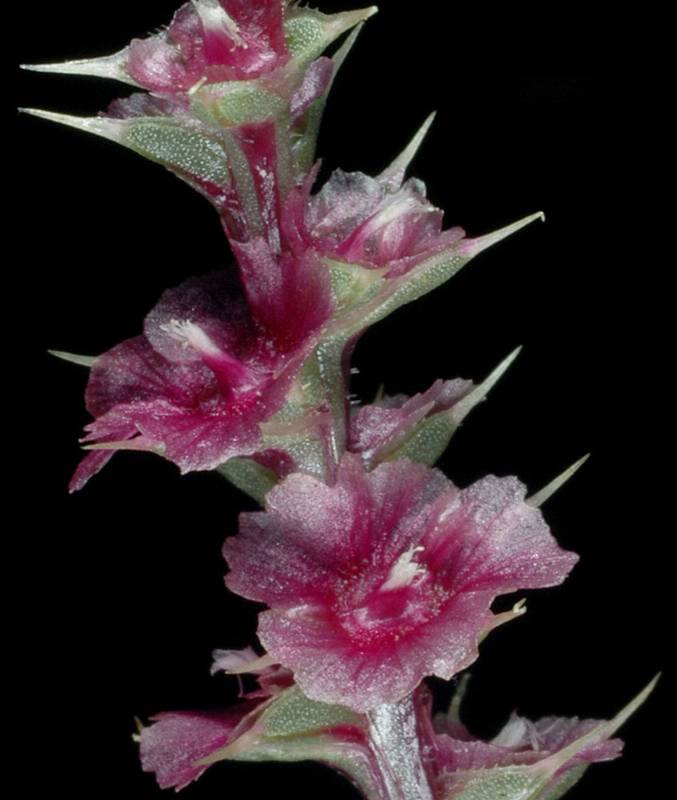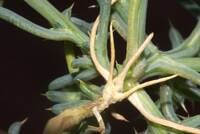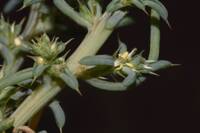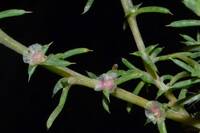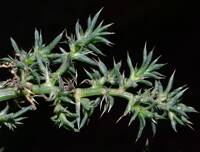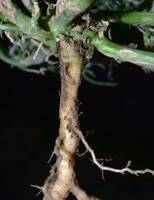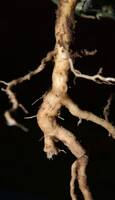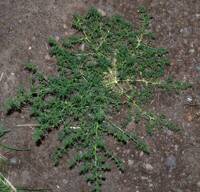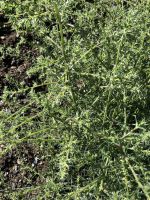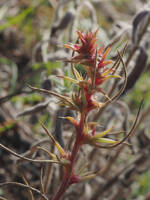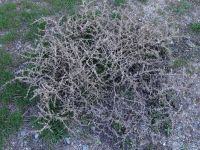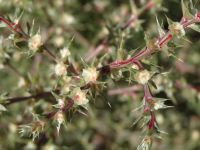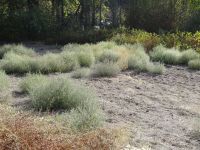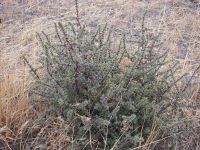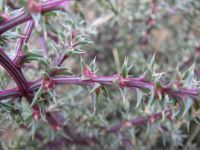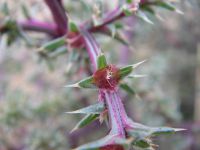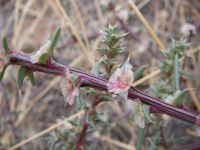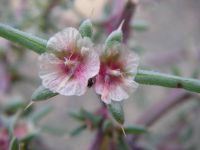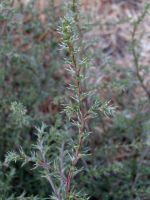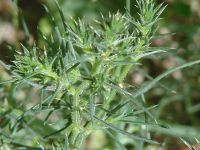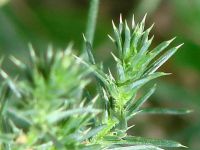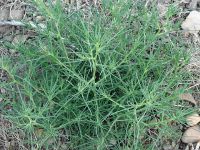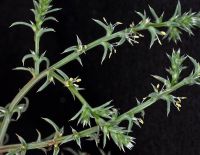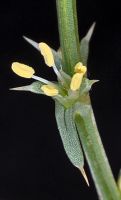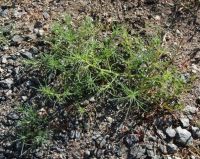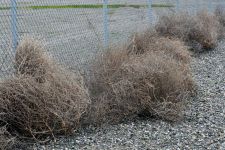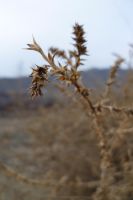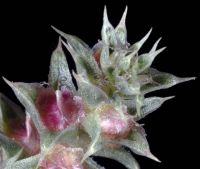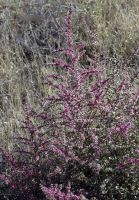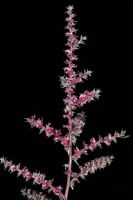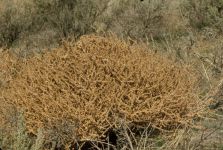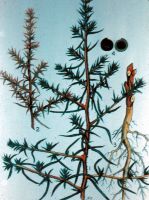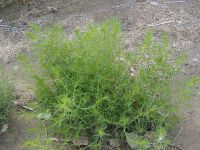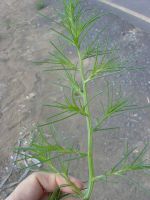Distribution: Occurring chiefly east of the Cascades crest in Washington, where widely distributed; southern British Columbia to California, east across North America to the Atlantic Coast.
Habitat: Roadside, meadows, fields, wastelots, and other disturbed open areas from low to middle elevations.
Flowers: June-August
Origin: Introduced from Eurasia
Growth Duration: Annual
Conservation Status: Not of concern
Pollination: Wind
Glabrous to pubescent annual, with numerous spreading-ascending, often purplish stems up to 1 m. long, becoming hardened and rounded, forming tumble-weeds.
Leaves alternate, linear, succulent, 1-3 cm. long, with a spiny tip, reduced upward but broadening at the base, becoming spiny bracts with scarious margins basally.
Flowers small, perfect, solitary or clustered in the axils of the bracts, each with a pair of bracteoles 2.5-3.5 mm. long; perianth 5-cleft nearly to the base, in fruit becoming winged, the wing veined; stamens 5, attached at the edge of a tiny, lobed disk; styles 2.
Fruit cup-shaped, 2.5 mm. broad, completely enclosed by the persistent calyx.
Publication: Cent. Pl. II. 13. 1756.
Salsola iberica (Sennen & Pau) Botsch. ex Czerepanov
Salsola kali L., misapplied [FNA4, HC, HC2]
Salsola kali L. var. tenuifolia Tausch ex Moq. [VPPNW2]
Salsola pestifer A. Nelson
PNW Herbaria: Specimen records of Salsola tragus in the Consortium of Pacific Northwest Herbaria database
WA Flora Checklist: Salsola tragus checklist entry
OregonFlora: Salsola tragus information
E-Flora BC: Salsola tragus atlas page
CalPhotos: Salsola tragus photos

